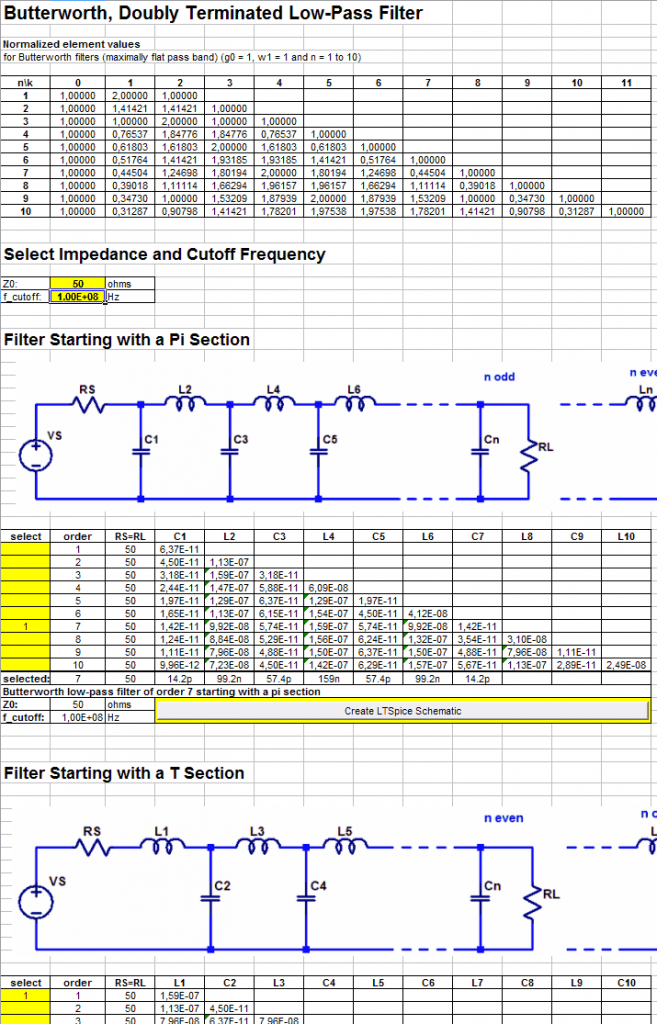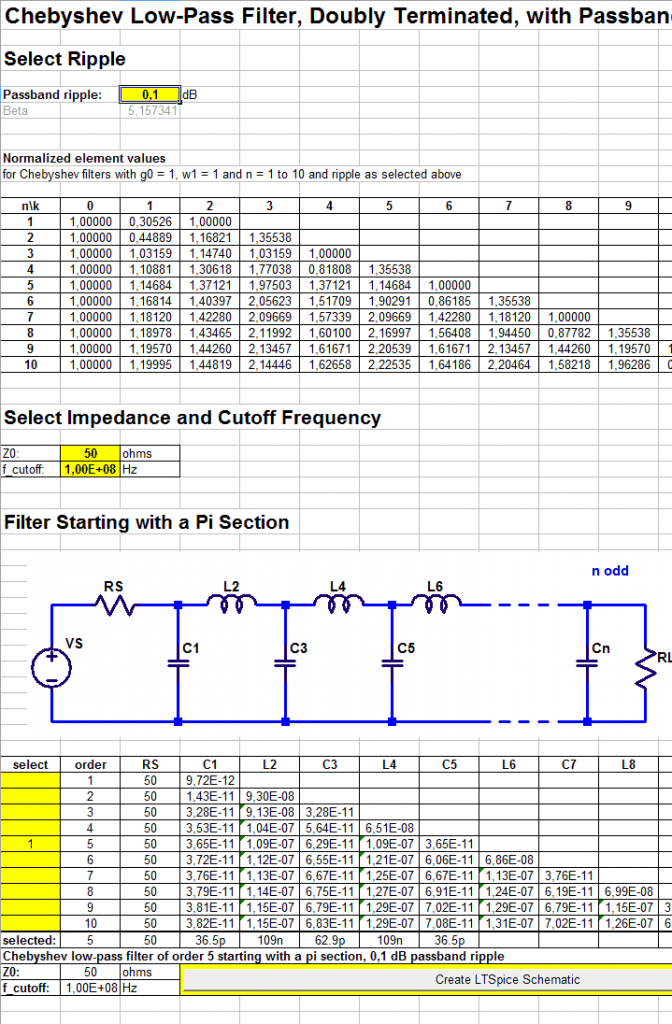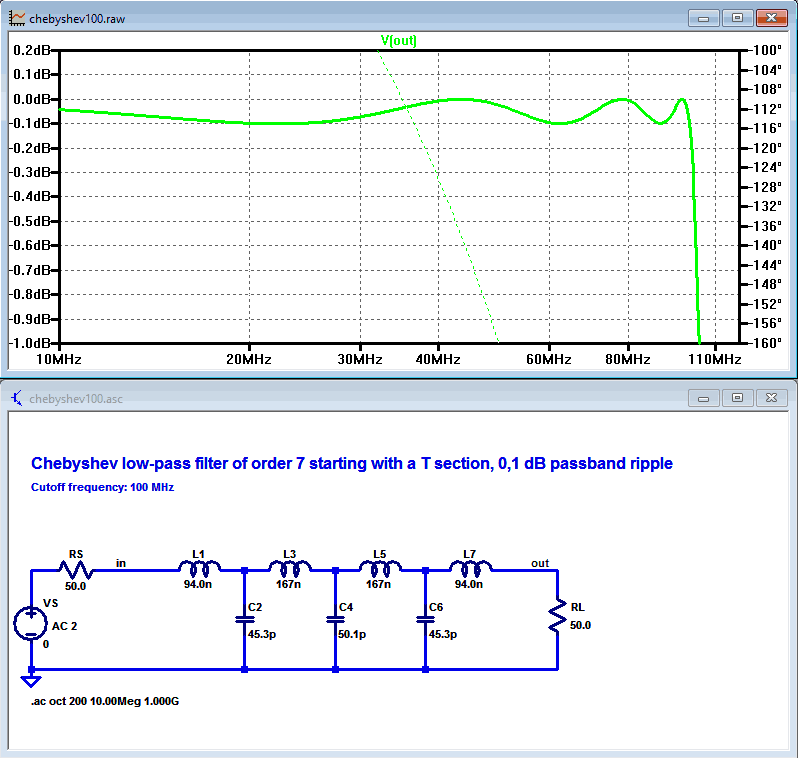In addition to calculating the (previously) magical prototype tables for Butterworth and Chebyshev (with user-specified pass-band ripple) filters, the spreadsheet also performs the frequency and impedance transformation for filters of orders from 1 to 10.
To make the design process even quicker and better, I added a feature to create
LTSpiceschematics of the selected filter so that the filter properties can be simulated (and perhaps manually adapted to standard component values and to include parasitics) using LTSpice. I used the
SI prefix formatting function I wrote about in the previous blog post to write out the component values in a pretty manner.
The usage of the spreadsheet should be fairly self-explanatory, but there are also usage instructions on the first tab. Basically, the user should fill out the values in yellow cells and leave the rest alone. I did not lock any cells, since I often get annoyed by spreadsheets with locked cells and I encourage others to modify and improve it.
Here is a link to the Excel 2002 file:
Make sure that macros are enabled if you want to use the LTSpice export features.
Here are some screenshots

Butterworth tab

LTSpice simulation of a Butterworth schematic generated by the spreadsheet.

Chebyshev tab

LTSpice simulation of a Chebyshev schematic generated by the spreadsheet.